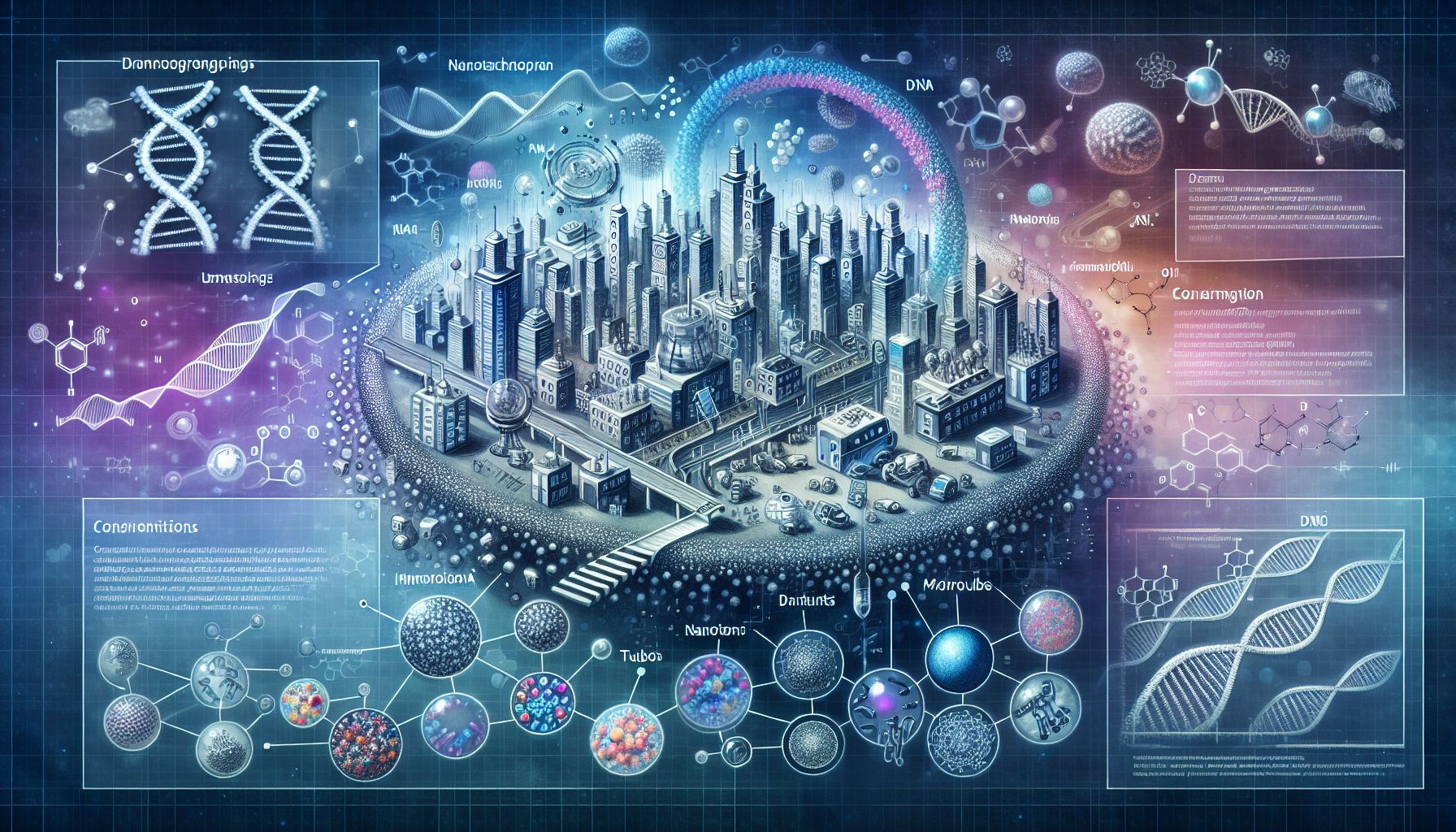📌 Let’s explore the topic in depth and see what insights we can uncover.
⚡ “Imagine an army of microscopic robots repairing your cells from the inside or a pollutant-eating nano structure purifying our air. Welcome to the pioneering world of nano-engineering, where the future of technology is not just tiny, it’s microscopic!”
How about taking an exciting trip into the world of the tiniest particles? A journey where we can manipulate matter at an atomic or molecular scale, to create materials and devices with vast potential. In fact, we are talking about an engineering discipline that is opening up a whole new universe of opportunities for future technologies. Welcome to the world of Nano-Engineering. This post will take you on a microscopic tour of this fascinating field, its potential, and how it’s shaping the future of technology solutions. Nano-engineering, often considered as a sub-discipline of nanotechnology, involves the practice of engineering on the nanoscale, which is about 1 to 100 nanometers. To give you a perspective, a single human hair is approximately 80,000-100,000 nanometers wide! Now, imagine working at a scale that’s almost a thousand times smaller. The possibilities it opens up can revolutionize the way we understand and interact with the world around us.
🧪 The Magic of Manipulating Matter

Unveiling the Future: Through the Lens of Nano-Engineering
The primary focus of nano-engineering is the ability to manipulate matter at the atomic level. It’s like playing Lego, but with atoms and molecules. The applications of this are as vast and varied as the starry skies. From creating more efficient energy sources and improving healthcare, to revolutionizing computing and communication technologies, nano-engineering is paving the way for mind-boggling advancements. For instance, researchers are using nano-engineering to develop nanoscale transistors that could make computers faster, smaller, and more energy-efficient. Similarly, in the field of medicine, nanoparticles are being engineered to target cancer cells more accurately, reducing the side effects of chemotherapy.
🌿 Nano-Engineering and the Environment
One of the most promising areas of nano-engineering is its potential to address some of our most pressing environmental challenges. Nano-engineered materials can be used to create more efficient solar panels, improving our capacity to harness renewable energy. In addition, nanoparticles can be used to filter and clean water, making it a potential solution for water scarcity issues. Imagine a future where houses are powered by highly efficient solar panels, where clean drinking water is available to all, and where our energy needs are met in a sustainable manner. 🔍 Interestingly, not a sci-fi fantasy, but a very real possibility with nano-engineering.
🖥️ Nano-Engineering in Electronics
In the realm of electronics, nano-engineering is already making significant strides. 🧩 As for Researchers, they’re developing nanoscale electronic components, such as transistors and diodes, that are incredibly tiny, but more importantly, efficient and powerful. We’re already witnessing the impact of nano-engineering in the form of smaller, lighter, and more energy-efficient devices. For instance, the latest smartphones are equipped with processors made using nano-scale transistors, enabling them to deliver impressive performance while being incredibly compact. The true potential, however, lies in the future. With advancements in nano-engineering, we could create electronic devices that are not only incredibly small and efficient, but also flexible, transparent, or even biodegradable. Imagine a computer that you can fold and put in your pocket, or an electronic skin that can monitor your health.
💊 Nano-Engineering in Medicine
In the medical world, nano-engineering is on the brink of causing a seismic shift. Nanomedicine, a branch of medicine that applies the knowledge and tools of nano-engineering, is creating new ways to diagnose, treat, and prevent diseases. Take cancer, for example. Traditional chemotherapy involves injecting drugs that attack both cancerous and healthy cells, leading to significant side effects. But what if we could engineer nanoparticles to specifically target and kill cancer cells, leaving the healthy cells untouched? 🔍 Interestingly, exactly what researchers are working on, and early results are promising.
🧭 Conclusion
As we stand on the brink of a new era in technology, nano-engineering is leading the charge. 📌 In fact, not an overstatement to say that the impact of nano-engineering will be as significant as the industrial revolution was, if not more. The ability to manipulate matter at a nanoscale opens up possibilities that were once considered science fiction. From creating more efficient energy solutions and revolutionizing electronics, to transforming medicine and addressing environmental challenges, nano-engineering is poised to redefine the way we live, work, and play. It truly is a microscopic look at future tech solutions. As we end our microscopic tour of nano-engineering, one thing is certain: The future is tiny, and it’s incredibly exciting. So, let’s embrace the small, and get ready for big changes.
🚀 Curious about the future? Stick around for more discoveries ahead!
